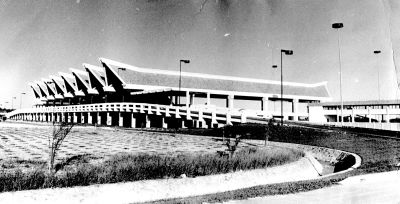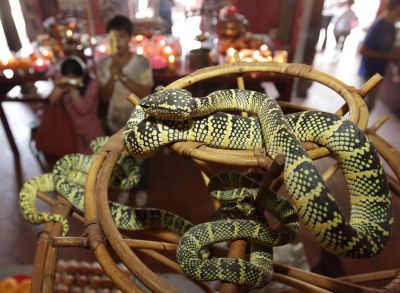
NOBODY would have imagined that Bayan Lepas – which is now full of factories, houses and shopping centres — used to be the rice bowl of Penang, just one big padi field stretching as far as the eye can see.
These padi fields used to be on both sides of the main road, and the network of irrigation canals provided youngsters like us plenty of opportunities to fish and catch frogs.
The fish were not for the dinner table, but were mainly common guppies and the occasional fighting fish, which found their way into our home aquariums.
Back then, a number of pre-war bunkers could be seen scattered among the padi fields. There is one remaining along the road in Relau now, not far from the Bayan Lepas main road, but most people pass it by without knowing it is there.
In Batu Maung, where a war museum has been set up, visitors can now see the underground tunnels, ammunition bunkers and ventilation shafts set up by the British army in their futile attempt to fight the Japanese invaders.
For older Penangites who remember Bayan Lepas as an isolated rural setting, its transformation into a major urban hub, starting with the setting up of the Free Trade Zone, must have been quite phenomenal.
As a child, I always looked forward to my trips to the Bayan Lepas airport to see a relative off. Those were the days when you could still see the passengers up close from the viewing gallery as they walked towards the planes.
Other than that, Bayan Lepas was not really a place a city boy like me would head to — it was simply a faraway place as far as we were concerned.
But I still recalled those days when we would be put onto chartered buses for the traditional round-the-island trip as part of the year-end programmes.
 Point of arrival: The Penang Airport in its early days.
Point of arrival: The Penang Airport in its early days. Bayan Lepas, Relau and Balik Pulau — regarded as spots on the other side of the island — were usually compulsory stops along the way.
The 163-year-old Snake Temple was of course one of the main attractions as was the Tunku Abdul Rahman Aquarium, located at the Fisheries Department off Jalan Gelugor. In fact, Jalan Akuarium remains as testimony to the existence of the first public aquarium in the country.
While the Snake Temple remains a major tourist attraction, the aquarium in that locality has since been closed down and the National Aquarium at Zoo Negara now bears the same name in honour of the country’s first Prime Minister.
Another aquarium, the Penang Aquarium, has since been set up in Batu Maung by the Fisheries Department as part of its research centre and is drawing visitors as well.
According to reports, the name Bayan Lepas means “the parakeet has flown away.”
The folklore has it that a wealthy Sumatran family had arrived by boat at the coast of Bayan Lepas in the late 19th century and as they reached the shore, their pet parakeet flew off.
Another story has it that Bayan Lepas was named after Raja Bayan or Nakhoda Bayan, said to be a prince from Minangkabau.
He was said to have settled in Penang in the 1700s, when Penang was still part of Kedah, and that he was appointed to be a headman by the Sultan of Kedah.
But there was one man who changed the entire face of Bayan Lepas. After Gerakan, then an opposition party, swept into power in the 1969 general election, Chief Minister Dr Lim Chong Eu rolled out his economic plans.
He created the Bayan Lepas Free Trade Zone to enable foreign investors to open factories, mostly assembly plants, in Penang, to resolve the high unemployment rate in the state.
With attractive options, including pioneer tax status, multinational electronic giants descended on the island, paving the way for Penang to be known as the Silicon Valley of the East.
 Still popular: Devotees offering prayers at the Snake Temple.
Still popular: Devotees offering prayers at the Snake Temple. It would not be wrong to say that Dr Lim’s masterplan of turning the padi fields into one big industrial area helped propel Penang’s economy, especially after its free port status had been taken away.
The Free Trade Zone created thousands of job opportunities for people from all walks of life.
But some things will never change. Just a little distance from the Penang International Airport is the old town of Bayan Lepas.
Pre-war houses still line both sides of the main road while the police station and market, built in 1930, have remained.
Each time I return to Penang, I would make an effort to eat at the Cargas Café, which serves one of the best nasi campur Melayu on the island. The fried chicken and sting ray curry – the signature dishes of the restaurant – are simply delicious.
The seafood porridge in Jalan Sultan Azlan Shah is also a local favourite.
Another important icon in Bayan Lepas which has personal bearing for me is The Star’s Northern Hub.
For those of us who began our Star careers in the earlier offices, either in Weld Quay or Pitt Street, the Star Northern Hub is truly a different office altogether.
Out of this five-storey building in Sungai Tiram, Bayan Lepas, the Star is printed for distribution in Penang and throughout the northern region.
Because of its size, the building feels “spacious” compared to the town office, but it has all the latest trimmings of the complete media hub.
Each time I am back in Penang, I will drop in at the Northern Hub to touch base with our team there. And, without fail, my colleagues will always invite me out for a meal nearby.
Many people, including Penangites themselves, now see Bayan Lepas as a thriving township starting from Queensbay Mall.
But right at the other end of Bayan Lepas is where the old world charm has remained at the Bayan Lepas old town.
Time seemed to have stood still here. And that, in a way, is what makes Penang uniquely special with its blend of new and old world charms.
For sure, there are still some things about Bayan Lepas that have not terlepas, or disappeared.
*Readers write
> KK Tan: I have always wondered why Francis Light is regarded as the founder of Penang. Surely, there were already locals on the island before he landed on the island.
Chun Wai: I am not a historian but merely a student of history. This has always been a controversial subject, depending on which school of thought you subscribe to. But conventionally, the understanding is that Light was the first person to set up a proper system of administration and governance after his arrival. The legal, financial and security systems, for example, had to be properly set up to allow trading to be carried out as Penang had become a port by then. By having these systems in place, it attracted more traders to Penang and conduct business with the assurance that everything will be properly documented.
> Another reader, tourist Jeff Black, wants to know the origin of the name Batu Ferringhi, where he often stays when he comes to Penang.
Chun Wai: According to what has been reported, the word ferringhi is said to originate from the Malay term for a person of Portuguese descent, but could also be taken to mean all westerners. Some said Batu Ferringhi also meant the rocks where the western foreigner landed.
> Jeffrey Leong asked for some information about Chowrasta Street along Penang Road.
Chun Wai: Chowrasta is an Urdu word which means “four cross roads”. In fact, the Chowrasta Market is located within the area flanked by Chowrasta Street, Tamil Street, Kuala Kangsar Road and Penang Road. Known to Hokkien-speaking Penangites as kelinga ban san or Indian market, it used to be dominated by Tamil Muslim traders.





